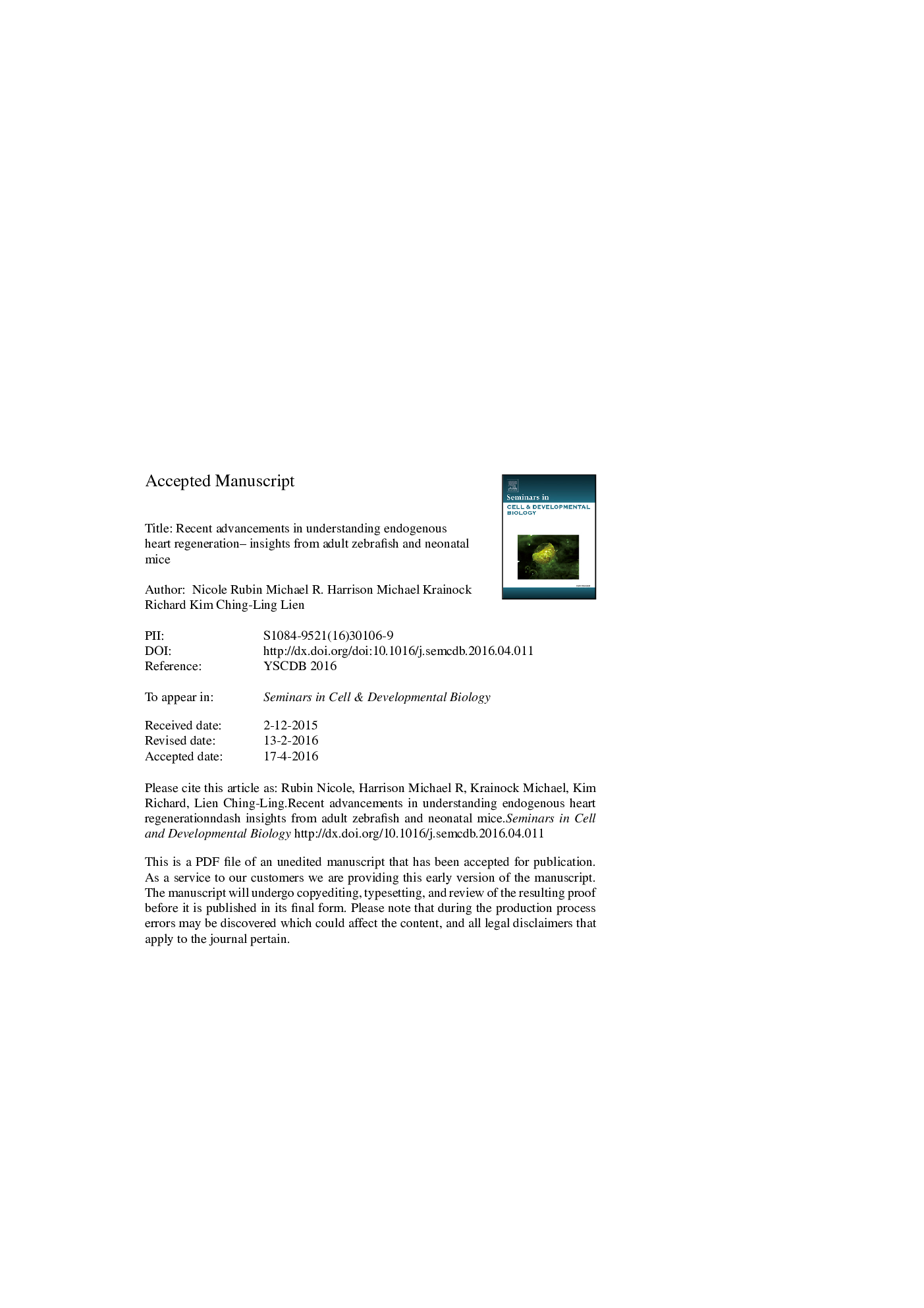| Article ID | Journal | Published Year | Pages | File Type |
|---|---|---|---|---|
| 5535013 | Seminars in Cell & Developmental Biology | 2016 | 29 Pages |
Abstract
Enhancing the endogenous regenerative capacity of the mammalian heart is a promising strategy that can lead to potential treatment of injured cardiac tissues. Studies on heart regeneration in zebrafish and neonatal mice have shown that cardiomyocyte proliferation is essential for replenishing myocardium. We will review recent advancements that have demonstrated the importance of Neuregulin 1/ErbB2 and innervation in regulating cardiomyocyte proliferation using both adult zebrafish and neonatal mouse heart regeneration models. Emerging findings suggest that different populations of macrophages and inflammation might contribute to regenerative versus fibrotic responses. Finally, we will discuss variation in the severity of the cardiac injury and size of the wound, which may explain the range of outcomes observed in different injury models.
Related Topics
Life Sciences
Biochemistry, Genetics and Molecular Biology
Cell Biology
Authors
Nicole Rubin, Michael R. Harrison, Michael Krainock, Richard Kim, Ching-Ling Lien,
